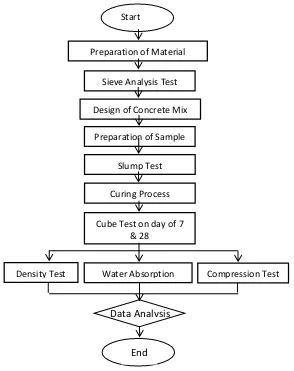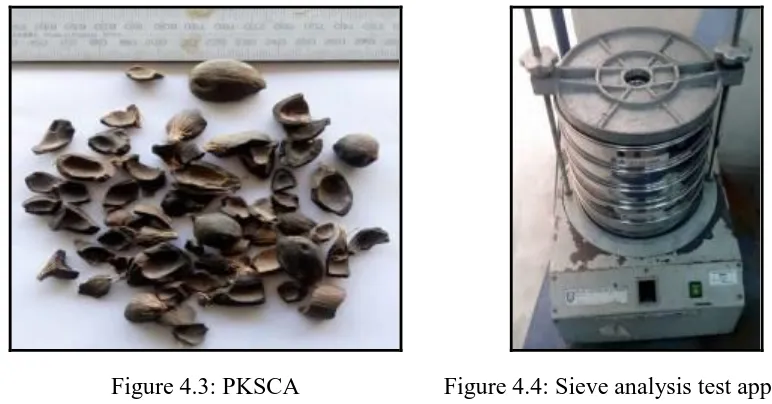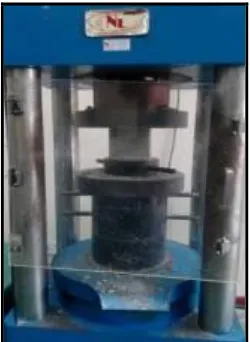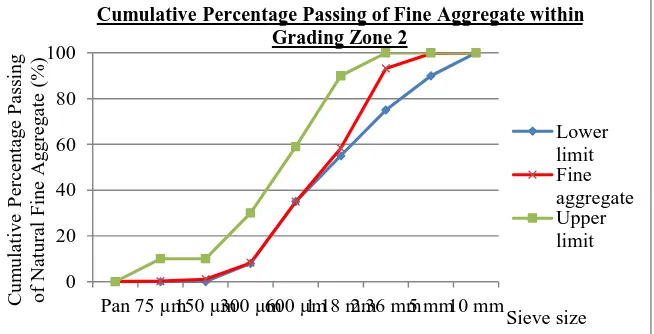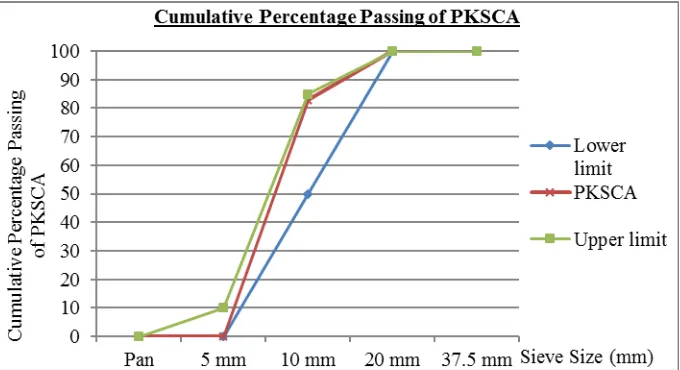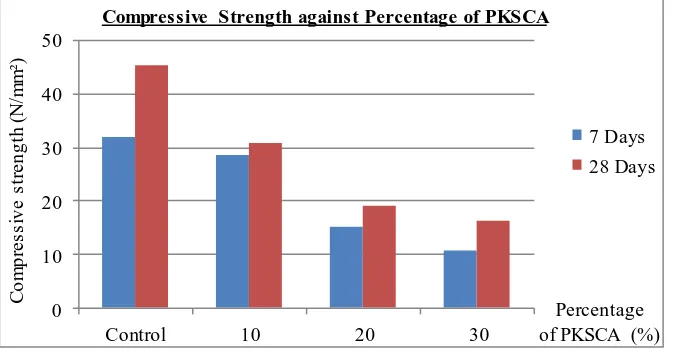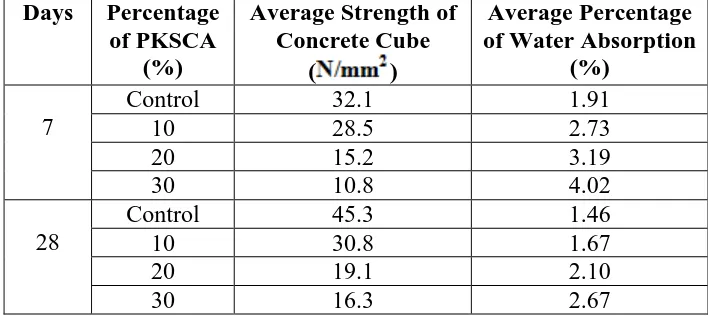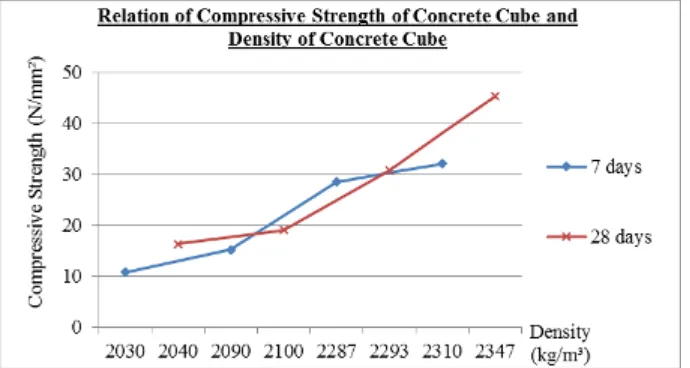Construction Materials and Technology Series 1 2018 ISBN 978-967-2183-19-8
49
CHAPTER 4
STUDY ON PALM OIL KERNEL SHELL COARSE AGGREGATE
(PKSCA) AS REPLACEMENT MATERIAL FOR COARSE
AGGREGATE IN CONCRETE MIX
Mohamad Luthfi Ahmad Jeni 1, Mohamad Azrul Zaini1
1Faculty of Engineering Technology
,
Universiti Tun Hussein Onn Malaysia
,
Parit Raja,
Batu Pahat,
86400 Johor
,
Malaysia.
4.1 INTRODUCTION
As we know the demand for material such as cement, fine and coarse aggregate is high. The construction industry is become bigger and bigger each day, but nowadays the price of material are not cheap like the old days. The price is increase drastically by 30% for the past few years. This condition is affecting the price of the construction process and the price of the building that will be sells. This also promotes fraud among the contractor which they may use the low quality material or changing the material specification in order to get more profits. So this study was carried out to find the alternative material for cement to overcome highly cost material especially coarse aggregate. This project aims were to reducing the usage of natural coarse aggregate in concrete mixture and to achieve most likely equivalent strength of normal concrete mixture.
Construction Materials and Technology Series 1 2018 ISBN 978-967-2183-19-8
50
By conducting this project, it can reduce the dependency on natural coarse aggregate. Natural coarse aggregate is widely used in construction. The source of natural coarse aggregate is from quarry, it originally in big size rock form which need to be blast by using dynamite. If we kept using these natural resources, eventually the sources became extinct. According to studies conducted by Naik & Moriconi [12], nearly 8 billion tonnes of sand and gravel or crushed rock are consumed for concrete making every year. So this research is an early step to preventing the natural resources from extinction. Nowadays, there is a lot of research regarding innovation from the recycled material. Researcher came out with a new idea to replace or reduce the usage of non-renewable resources and try to prevent it from extinction. Sustainability is the extent to which current needs can be fulfilled without compromising the needs of future generation [6].
The objective of this research is to determine the effectiveness of PKSCA as the replacement for coarse aggregate in concrete mixture. Second objective is to determine the density, compressive strength of concrete, percentage of water absorption and optimum content PKSCA to be replaced in concrete and last objective is to compare the performance of concrete containing PKSCA with normal concrete.
4.2 LITERATURE REVIEW
CONCRETE
Concrete is a composite material which consists of cement, fine and coarse aggregate and water, and it will be mix with a certain ratio and it will be let harden to form a structure for a building. Sometimes an admixture was added to the concrete to increase its strength and to improve the concrete properties such as strength and resistance to sulphate. There is several 3 type of concrete which are normal concrete, lightweight concrete and high density concrete. In this experiment the grade of concrete used was grade 30.
The concrete itself has a 2 type of properties which are fresh properties and hardened properties. The concrete in fresh phase are usually heavier than in hardened phase. The fresh concrete usually used to measure the workability of a concrete mix meanwhile the harden concrete used to measure strength. Strength of concrete can be influence by few factors which are quality of raw materials, water/cement ratio, coarse/fine aggregate ratio, age of concrete, compaction of concrete, and temperature. Therefore, it is crucial to calculate the design mix for concrete to obtained good strength of concrete.
Modified concrete is differ from normal concrete, because of the material used is different. For an example, according to research conducted by Olutoge [14], Palm Oil Shell Ash was used as replacement material for cement and research from Awal & Shehu [8], using Palm Oil Fuel Ash collected at chimney chamber of oil palm factory as replacement material for cement. There is also a research by Lim [10], replacing fine aggregate by using Palm oil Fuel Ash as fine aggregate in Lightweight Foamed Concrete (LFC). This type of concrete can eventually reduce the dependency on natural sources of concrete materials. Thus, reducing the construction material cost.
Construction Materials and Technology Series 1 2018 ISBN 978-967-2183-19-8
[image:3.597.106.491.91.387.2]51
Table 4.1: Physical and chemical properties of cement [9] Chemical properties (wt%) Physical properties
CaO 62.4 Specific gravity 3.15
SiO₂ 20.4 Specific surface Blain (m²/kg) 3.99
Al₂O₃ 5.2 Initial setting time (min) 125
Fe₂O₃ 4.2 Final setting time (min) 210
MgO 1.6
SO₃ 2.1
K₂O 0.005
N₂O -
Loss on ignition 2.36
Table 4.2: Properties of fine and coarse aggregate [15]
Properties Fine aggregate Course aggregate
Specific Gravity 2.64 2.62
Fineness Modulus 2.29 6.58
Saturated Surface Dry Absorption (%)
0.85 1.13
Void (%) 34.3 38.6
Density ( ) 1680 1620
Water for concrete mix must clean and free from impurities that can affect the concrete mix. It is usually specified as being qualified for drinking. The artificial coarse aggregate was made up by Palm oil Kernel Shell.
[image:3.597.60.529.473.695.2]Figure 4.1: Part of palm oil fruit
Table 4.3: Bulk physical and chemical properties of palm oil kernel shell [13]
Properties Parameter Value
Physical Moisture content (%) 6.11
Ash content (%) 8.68
Bulk density ( ) 740
Porosity (%) 28
Chemical C (%) 46.75
H (%) 5.92
O (%) 37.97
N (%) 0.68
S (%) < 0.08
Cl (ppm) 84
Structural carbohydrate
Hemicellulose (%) 26.16
Cellulose (%) 6.92
Lignin (%) 53.85
PALM OIL KERNEL SHELL
Construction Materials and Technology Series 1 2018 ISBN 978-967-2183-19-8
52
scientific name of African palm oil. Figure 4.1shows the part of palm oil fruit.
The hard shell is the part was taken in this research. It has a hard, walnut shell-like parts of the fruit appearance. Because of its physically strong structure make it suitable for replacement material
for coarse aggregate. Table 4.3 shows the bulk physical and chemical properties of palm oil kernel
shell.
GRADATION OF AGGREGATE
[image:4.597.73.526.282.651.2]Gradation of aggregate was done by conducted Sieve Analysis Test to aggregate. According to Zakaria [7], size of fine aggregate must be smaller than 5 mm, while coarse aggregate must be bigger than 5 mm. Table 4.4 shows the fine aggregate grading and Table 4.5 shows the coarse aggregate grading.
Table 4.4:Grading of fine aggregate [7]
Sieve size (BS 410) Percentage weight passing BS sieve (%)
Zone 1 Zone 2 Zone 3 Zone 4
10 mm 100 100 100 100
5 mm 90-100 90-100 90-100 95-100
2.36 mm 60-95 75-100 85-100 95-100
1.18 mm 30-70 55-90 75-100 90-100
600 µm 15-34 35-59 60-79 80-100
300 µm 5-20 8-30 12-40 15-50
150 µm (natural sand) 0-10 0-10 0-10 0-15
150 µm (crushed rock) 0-20 0-20 0-20 0-25
Table 4.5:Grading of coarse aggregate [7]
Sieve size (BS 410)
Percentage weight passing BS sieve (%) Nominal size of graded
aggregate (mm)
Nominal size of single sized aggregate (mm)
40-5 20-5 14-5 63 40 20 14 10
75 mm 100 - - 100 - - - -
63 mm - - - 85-100 100 - - -
37.5 mm 95-100 100 - 0-30 85-100 100 - -
20 mm 35-70 95-100 100 0-5 0-25 85-100 100 -
14 mm - - 90-100 - - - 85-100 100
10 mm 10-40 30-60 50-85 - 0-5 0-25 0-50 85-100
5 mm 0-5 0-10 0-10 - - 0-5 0-10 0-25
2.36 mm - - - 0-5
CONCRETE TEST
Construction Materials and Technology Series 1 2018 ISBN 978-967-2183-19-8
53
Water absorption test was done to determine the water absorption rate of concrete. The rate of water absorption was calculated by using equation below:
Meanwhile compressive strength test was done to determine the strength of concrete cube. The strength was calculated by using equation below:
[image:5.597.160.454.375.746.2]4.3 METHODOLOGY
Figure 4.2shows the flowchart methodology. This flowchart shows the test and work was done in this
research.
Figure 4.2: Flowchart Methodology Start
Data Analysis Preparation of Material
Sieve Analysis Test
Design of Concrete Mix
Preparation of Sample
Cube Test on day of 7 & 28
Curing Process Slump Test
Water Absorption Test
Density Test Compression Test
Construction Materials and Technology Series 1 2018 ISBN 978-967-2183-19-8
54
PALM OIL KERNEL SHELL COARSE AGGREGATE (PKSCA)
This research involving a production of PKSCA. Figure 4.3 shows the palm oil kernel shell coarse
aggregate (PKSCA). The percentages of PKSCA use in this research are 0%, 10%, 20% and 30%. The palm oil kernel shell will be taken at palm oil mill. Since the Palm oil Kernel Shell sample is already crushed at the at the palm oil mill, so it just need to be dried under the sun for one day and no need to crushed. Then the PKSCA need to sieve by using BS Sieve 5 mm. Only sample that retained on the 5 mm sieve will be used in concrete mix.
SIEVE ANALYSIS TEST
Sieve analysis test was done to identify the distribution size of an aggregate and it was done
according to BS 410 [23]. Figure 4.4shows the apparatus of sieve analysis test which is BS sieve and
shaker machine.
Figure 4.3: PKSCA Figure 4.4: Sieve analysis test apparatus
DESIGN OF NORMAL CONCRETE MIX (DOE METHOD)
Doe method help to calculate the correct proportion of cement, fine and course aggregate and water for concrete mix. All calculation guidance and DOE form was obtained from Franklin [3]. Table 4.6 shows the result of DOE method calculation and Table 4.7 shows the total weight of PKSCA used in 0.012 m³ trial concrete mix.
Table 4.6: Result from DOE method calculation Quantities Cement
(kg)
Water (kg or liter)
Fine Aggregate (kg)
Course aggregate (kg)
Per to
nearest 5kg
381 210 808 1071
Per trial mix of 0.012
[image:6.597.55.441.299.501.2]Construction Materials and Technology Series 1 2018 ISBN 978-967-2183-19-8
55
Table 4.7: Total weight of PKSCA used in 0.012 m³ trial concrete mix Percentage of
PKSCA (%)
Total Weight of PKSCA (kg)
Total Weight of Natural Coarse Aggregate (kg)
0 0 12.85
10 1.285 11.565
20 2.57 10.28
30 3.855 8.995
SLUMP TEST
Slump test was done for concrete mix to determine the workability of the concrete and it is done according to BS EN 12350-2 [22]. The mix for slump test was the same mix used in cube sample. The list of slump test apparatus are slump cone (Height = 300 mm, Base = 200 mm, Top diameter = 100 mm), compaction rod (Diameter = 16 mm, Length = 600 mm), ruler and base plate. Figure 4.5 shows the slump test apparatus.
CONCRETE CUBE
A total of 48 concrete cubes were produced in this research and the concrete cube was produced based on BS 1881-108 [19]. The list of apparatus and material used in concrete cube production are steel cube mould (100mm x 100mm x 100mm), river sand, gravel, PKSCA, cement (OPC), water, mini drum mixer.
CURING PROCESS
After the concrete harden for 24 hour, the concrete was removed from the mould and undergoes curing process for 7 and 28 days in tank that filled with water.
DENSITY TEST
[image:7.597.360.485.566.737.2]The density test was done to hardened concrete cube for determine the density of harden concrete and it was done according to BS EN 12390-7 [24]. The list of apparatus and material for density test are measuring tape, weight balance and concrete cube.
Figure 4.5: Slump test apparatus Figure 4.6: Compressive strength test
[image:7.597.69.306.567.739.2]Construction Materials and Technology Series 1 2018 ISBN 978-967-2183-19-8
56 COMPRESSIVE STRENGTH TEST
The compressive strength test was done to determine the strength of concrete cube specimen and it was done according to BS EN 12390-3 [23]. Figure 4.6 shows the compressive strength test machine.
WATER ABSORPTION TEST
Water absorption test is done to determine the percentage of water absorption of concrete block sample and it was done according to BS 1881-122 [22]. The list of apparatus and material are weight balance, drying oven, concrete cube and tank.
4.4 RESULTS AND DISCUSSIONS
SIEVE ANALYSIS TEST
This test is conducted to identify the distribution of an aggregate and to find the grade of the aggregate. According to the Zakaria [7], the size of fine aggregate must not exceed 5 mm. The natural fine aggregate is graded into Zone 2 by referring from BS 410 [21]. Figure 4.7 shows the graph of cumulative percentage passing of natural fine aggregate within grading Zone 2. So the fine aggregate is suitable for concrete because the size is not too coarse which in Zone 1 and not too fine which in Zone 4. 0 20 40 60 80 100
Pan 75 µm150 µm300 µm600 µm1.18 mm2.36 mm5 mm10 mm
C u m u lativ e P er ce n tag e P ass in g o f Natu ral Fin e A g g reg ate (%) Sieve size
Cumulative Percentage Passing of Fine Aggregate within Grading Zone 2
[image:8.597.136.463.403.570.2]Lower limit Fine aggregate Upper limit
Figure 4.7: The graph of cumulative percentage passing of natural fine aggregate within grading zone 2
Construction Materials and Technology Series 1 2018 ISBN 978-967-2183-19-8
[image:9.597.133.467.91.280.2]57
Figure 4.8: The graph of cumulative percentage passing of coarse aggregate for nominal size of graded aggregate 20mm - 5mm
Figure 4.9: The graph of cumulative percentage passing of pksca for nominal size of graded aggregate 14mm - 5mm
SLUMP TEST
Slump test was done based on procedure provided in BS EN 12350-2 [22] to determine the workability of the fresh concrete mixture. Figure 4.10 shows the graph of slump height against the percentage of PKSCA. It seem like concrete slump that contain PKSCA 30% have a lowest value compared to other. Firstly, it because of the increasing total surface area of the aggregate since the size of PKSCA is slightly smaller compared to the natural aggregate. So more water is needed to cover the large area of the PKSCA, thus increase the water demand of the concrete. But the value of slump collapse is still in the acceptable range of concrete design mix which is 30 – 60 mm.
Secondly, PKSCA is made up from Palm oil Kernel Shell which is an organic material. The palm oil kernel shell has high porous structure which allows it to absorb water, thus decreasing water content in the water content in concrete mix.
[image:9.597.129.469.321.506.2]Construction Materials and Technology Series 1 2018 ISBN 978-967-2183-19-8
58
good. According to Zakaria [7], a good concrete must obtained a true slump which the slump value is within 12 – 115 mm, meanwhile the shear and collapse slump shows that the concrete is lack in cohesiveness or the concrete is too wet.
0 10 20 30 40 50 60
Control 10 20 30
Heig h t o f slu m p ( m m ) Percentage of PKSCA (%)
[image:10.597.144.455.154.317.2]Height of Slump against Percentage of PKSCA
Figure 4.10: Graph of slump height against percentage of PKSCA
COMPRESSIVE STRENGTH TEST
The compressive strength test was done based on procedures provided in BS EN 12390-3 [23]. Figure 4.11 shows the graph of compressive strength test with different percentage of PKSCA.
0 10 20 30 40 50
Control 10 20 30
C o m p re s s iv e s tr e n g th ( N /m m ²) Percentage of PKSCA (%)
Compressive Strength against Percentage of PKSCA
7 Days 28 Days
Figure 4.11: Graph of compressive strength test with different percentage of PKSCA
From the graph, it seems that the compressive strength is increased as the curing period increase. According to the Duggal [2], the concrete reach 50% of the strength on 7 days of curing and it gains its full strength on 28 days of curing. It also seems like the compressive strength is decreased simultaneous as the percentage of the PKSCA is increase. The shape of the PKSCA is angular but not as solid as natural aggregate, in addition the presence of smooth and rounded surface on some area of the PKSCA makes it a bit difficult to interlock with concrete mixture. Only control and 10% PKSCA replacement concrete sample achieved minimum compressive strength on 7 days and specified characteristic compressive strength on 28 days because According to Mishra [26] for concrete grade
30, the minimum compressive strength of concrete for 7 days is 20 and the specific
[image:10.597.132.469.417.591.2]Construction Materials and Technology Series 1 2018 ISBN 978-967-2183-19-8
59 WATER ABSORPTION TEST
The water absorption test was done based on procedures provided in BS 1881-122 [20]. Figure 4.12 shows the graph of water absorption test with different percentage of PKSCA. It shows an increasing trend on the percentage of water absorption as the replacement percentage of PKSCA is increased. Khankhaje [9] stated that, the Palm oil Kernel Shell has a highly porous structure, this trait influencing the increment percentage of water absorption on concrete containing PKSCA. This proves why the percentage of water absorption increased.
Meanwhile, the percentage of water absorption is decreased when the curing period is longer. The curing age is one of the factors influencing the percentage of water absorption of the concrete mix. Concrete with 7 days of curing age have high water demand compared to the 28 days of curing age. This is because at the day of 7 the concrete only achieve 50% of its strength and needed more water for hydration process to gain full strength, thus increasing the water absorption of the concrete cube. But according to BS 1881-122 [20], the allowable percentage of water absorption is 2-5%, so all concrete mixture is passing the allowable percentage.
0 0.5 1 1.5 2 2.5 3 3.5 4 4.5
Control 10 20 30
P er ce n tag e o f w ater ab so rp tio n (%) Percentage of PKSCA
Water Absorption Test against Percentage of PKSCA
[image:11.597.132.467.333.505.2]7 Days 28 Days
Figure 4.12: Graph of water absorption test with different percentage of PKSCA
Table 4.8: Result of compressive strength test and water absorption with different percentage of PKSCA at the age 7 & 28 days
Days Percentage of PKSCA
(%)
Average Strength of Concrete Cube
( )
Average Percentage of Water Absorption
(%)
7
Control 32.1 1.91
10 28.5 2.73
20 15.2 3.19
30 10.8 4.02
28
Control 45.3 1.46
10 30.8 1.67
20 19.1 2.10
[image:11.597.120.474.565.723.2]Construction Materials and Technology Series 1 2018 ISBN 978-967-2183-19-8
60 NORMAL CONCRETE VS PKSCA CONCRETE
Table 4.8shows the result of compressive strength test and water absorption with different percentage
of PKSCA at the age 7 & 28 days. From Table 4.8, we can conclude that the dominated both test which are the compressive strength of concrete cube and water absorption of concrete cube. Concrete with the replacement percentage of 10% obtained the closest value to the control mix concrete. Compressive strength of 10% PKSCA replacement was in allowable strength limit which is 20
at 7 days and 30 for 28 days and also passes the allowable percentage for water
absorption which is 2-5%. From this result, it proves that the 10% replacement of PKSCA is an ideal percentage replacement and can be used as structural and non-structural concrete. For 20% and 30% replacement of PKSCA, it can also been implemented in lightweight concrete.
[image:12.597.128.473.419.603.2]RELATIONSHIP OF DENSITY CONCRETE CUBE WITH COMPRESSIVE STRENGTH AND WATER ABSORPTION OF CONCRETE CUBE
Figure 4.13 shows the graph of relation of compressive strength and the density of concrete cube and Figure 4.14 shows the graph of relation of water absorption and the density of concrete cube. The
normal concrete was usually weight about 2400 and it is commonly used for structural
purposes. Meanwhile second type is called high density concrete. The high density concrete is weight
about 3360 to 3840 and also can be design up to 5820 . Meanwhile for
lightweight concrete is around 500 to 1850 . From Figure 4.13 and 4.14, that normal
concrete and concrete containing 10%, 20% and 30% of PKSCA is classified as normal concrete.
Figure 4.13: Graph of relation of compressive strength and density of concrete cube
Based on Figure 13, it seem like the compressive strength is decreased as the density of concrete decreased. Density of concrete decreased because an increment of percentage of PKSCA in concrete cube. According to Shafigh [16], the specific gravity of Palm Oil Shell is about 1.14 – 1.37 and it is approximately 60% lighter compared to natural coarse aggregate. It is proven that the density of concrete will influence the compressive strength of concrete.
Construction Materials and Technology Series 1 2018 ISBN 978-967-2183-19-8
61
From Figure 4.14, it seem like seem like the percentage of water absorption of concrete
increased when density of concrete in decreased. So it prove that the percentage replacement of PKSCA affect the percentage of water absorption of concrete. If the concrete have high percentage of water absorption, it is not good for structural element concrete, because presence of water will causing the reinforced bar to corrode and lowering the strength of concrete. It also seem like there is a slight different in water absorption when the curing age of concrete is longer. 28 days age of concrete have lower value of water absorption percentage compared to 7 days age of concrete. This is happen because 7 days age of concrete has more water demand compared to 28 days age of concrete. 7 days age of concrete only achieve half of its strength and need more water for hydration process in concrete.
Figure 4.14: Graph of relation of water absorption and density of concrete cube
4.5 CONCLUSIONS
These are the conclusion obtained from the research:
1. From sieve analysis test result, the cumulative percentage for PKSCA was classified as
nominal size aggregate 14mm-5mm and within the range of BS 410.
2. From slump test result, slump height is decreasing as the percentage of PKSCA replacement is
increased, this prove that the physical shape of PKSCA allow it to bind well with fresh concrete mix. The reduction of slump height is causes by lack of water in concrete mix due to the high ability of PKSCA to absorb water.
3. The first objective for this research was achieved. The gradation of aggregate analysis shows
that the size of PKSCA is well within the grading zone of BS 410 [21]. Concrete that contain 10% of PKSCA perform well in compressive strength test and water absorption test compared to 20% and 30% of PKSCA replacement in concrete, but all percentage of PKSCA replacement concrete obtained true slump for slump test which is good for fresh concrete mix.
4. The second objective for this is research was achieved. The density of concrete decreased as
Construction Materials and Technology Series 1 2018 ISBN 978-967-2183-19-8
62
is grade 30. So, the most optimum and effective content of PKSCA replacement for grade 30 concrete mixes is 10%.
5. Last objective of this research was also achieved. Normal concrete with grade 30 dominated
the all of the test which are density, compressive strength test and water absorption test compared to 10%, 20% and 30% replacement of PKSCA in concrete mix, but the 10% replacement of PKSCA have the most approaches value to the control concrete mix.
4.6 RECOMMENDATION
Based on experience, obstacle happen during conducting this research and result from this experiment, this is several recommendation that I can proposed to improve this research:
1. Conduct the Non – Destructive test (NDT) such as Rebound Schmidt Hammer Test and
Ultrasonic Pulse Test to get more detailed and comprehensive result.
2. Using cylinder specimen with size of (150 mm radius x 300 mm height) to conducting
splitting cylinder test.
3. Using PKSCA in structural element concrete such as beam and slab to see the performance of
PKSCA in structure component.
4. Use lower percentage of PKSCA which is below 10% to determine the accurate optimum
content of PKSCA in concrete mix.
5. Using PKSCA with size lower than 5 mm to replacing fine aggregate
6. Since the PKSCA is organic material, more research on how to treat or cured the Palm oil
Kernel Shell so it can be long lasting and not decaying.
7. Increased the age of curing to see the result of compressive strength and to see whether the
Construction Materials and Technology Series 1 2018 ISBN 978-967-2183-19-8
63 REFERENCES
[1] Chudley, R. & Greeno, R. (2005). Construction Technology (4th ed.). Pearson Education
Limited.
[2] Duggal, S.K. (2008). Building Materials (3rd ed.). New Delhi, India: New Age International
(P) Limited.
[3] Franklin, R.E., Teychenne, D.C., & Erntroy, H.C. (1997). Design of Normal Concrete Mix
(2nd ed.). Garston: Building Research Establishment Limited.
[4] Manak, B. Indian Standard 456-2000 Plane and Reinforced Concrete-Code of Practice (4th
ed.). New Delhi, India: Bureau of Indian Standard. 2002
[5] Marotta, T.W. (2002). Basic Construction Materials (6th ed.). New Jersey: Pearson Education
Inc.
[6] Taylor, G.D. (2002). Materials in Construction: Principle, Practice and Performance (2nd
ed.). Harlow, England: Pearson Education Limited.
[7] Zakaria, M.L. (2001). Bahan dan Binaan. Kuala Lumpur: Dewan Bahasa dan Pustaka.
[8] Awal, A.S.M.A & Shehu, I.A. (2013). Evaluation of Heat of Hydration of Concrete
Containing High Volume Palm Oil Fuel Ash. Fuel 105. 2013. Page: 728–73.
[9] Khankhaje, E., Salim, M.R., Mirza, J., Hussin, M.W. & Rafieizonooz., M. (2016). Properties
of Sustainable Lightweight Pervious Concrete Containing Oil Palm Kernel Shell as Coarse
Aggregate. Construction and Building Materials. 2016
[10] Lim, S.K., Tan, C.S., Lim, O.Y. & Lee, Y.L. (2013). Fresh and Hardened Properties of
Lightweight Foamed Concrete with Palm Oil Fuel Ash as Filler. Construction and Building
Materials. 2013
[11] Mahmud, H., Jumaat, M.Z. & Alengaram, U.J. (2008). Ductility Behaviour of Reinforced
Palm Kernel Shell Concrete Beams. European Journal of Scientific Research, Vol.23 No.3,
Page: 406-420
[12] Naik, T.R & Moriconi, G. (2007). Environmental-friendly Durable Concrete Made with
Recycled Materials for Sustainable Concrete Construction. UWM Center for By-Products
Utilization, University of Wisconsin-Milwaukee. 2007
[13] Okoroigwe, E.C., Saffron, C.M. & Kamdem, P.D. (2014). Characterization of Palm Oil Kernel
Shell for Materials Reinforced and Water Treatment. Journal of Chemical Engineering and
Materials Science.
[14] Olutoge, F.A., Quadri, H.A. & Olafusi, O.S. (2012). Investigation of the Strength Properties of
Palm Kernel Shell Ash Concrete. Engineering, Technology & Applied Science Research, Vol.
Construction Materials and Technology Series 1 2018 ISBN 978-967-2183-19-8
64
[15] Rashad, A.M. (2013). A Preliminary Study on the Effect of Fine Aggregate Replacement with
Metakaolin on Strength and Abrasion Resistance of Concrete. Building Materials and Quality
Control Institute. 2013
[16] Shafigh, P., Jumaat, M.Z. & Mahmud, H.(2010). Mix Design and Mechanical Properties of
Oil Palm Shell Lightweight Aggregate Concrete. International Journal of the Physical
Sciences.
[17] Construction Standard 1 (2010). Testing Concrete (Vol. 1 & 2). Hong Kong: The Government
of the Hong Kong Special Administrative Region. CS 1. 2010
[18] Construction Standard 3 (2013). Aggregate for Concrete. Hong Kong: The Government of the
Hong Kong Special Administrative Region. CS 3. 2013
[19] British Standard Institution (1983). Method for Making Test Cubes from Fresh Concrete.
London: BS 1881-108. 1983
[20] British Standard Institution (1983). Method Determination of water absorption. London: BS
1881-122. 1983
[21] British Standard Institution (1986). Specification for Test Sieve. London: BS 410. 1986
[22] British Standard Institution (2009). Testing Fresh Concrete: Slump Test. London: BS EN
12350-2. 2009
[23] British Standard Institution (2009). Testing Hardened Concrete (Compressive Strength of Test
Specimens). BS EN 12390-3. 2009
[24] British Standard Institution (2009). Testing hardened concrete: Density of Hardened
Concrete. London: BS EN 12390-7. 2009
[25] Azmi., A.M.B.R. (2016). Study on Artificial Expanded Polystyrene Fine Aggregate as
Replacement Material in Concrete Mix. Degree Thesis. Universiti Tun Hussien Onn Malaysia.
![Table 4.1: Physical and chemical properties of cement [9] Physical properties Specific gravity](https://thumb-us.123doks.com/thumbv2/123dok_us/8750600.891801/3.597.106.491.91.387/table-physical-chemical-properties-physical-properties-specific-gravity.webp)
![Table 4.4: Grading of fine aggregate [7] Percentage weight passing BS sieve (%)](https://thumb-us.123doks.com/thumbv2/123dok_us/8750600.891801/4.597.73.526.282.651/table-grading-fine-aggregate-percentage-weight-passing-sieve.webp)
